With an increasingly fast-paced lifestyle and busy work schedule, many dog owners are looking for suitable solutions that would guarantee that their beloved pets are well-taken care of and happy.
A doggy daycare proved an excellent solution for hard-working pet parents who need a trusted place to care for their furry children and provide them with entertainment.
The Puppy Spring doggy daycare is the ultimate puppy ‘kindergarten’, caring for all pups aged 12 weeks or older.
They do all kinds of fun activities with the pups, but there is this one thing that people all over the world have fallen in love with.
According to a Puppy Spring spokesperson, the pups have a scheduled nap every day from 2 p.m. to 3:30 p.m.
During this time, all puppies curl up in their tiny sleeping bag. This adorable scene will simply melt your heart.

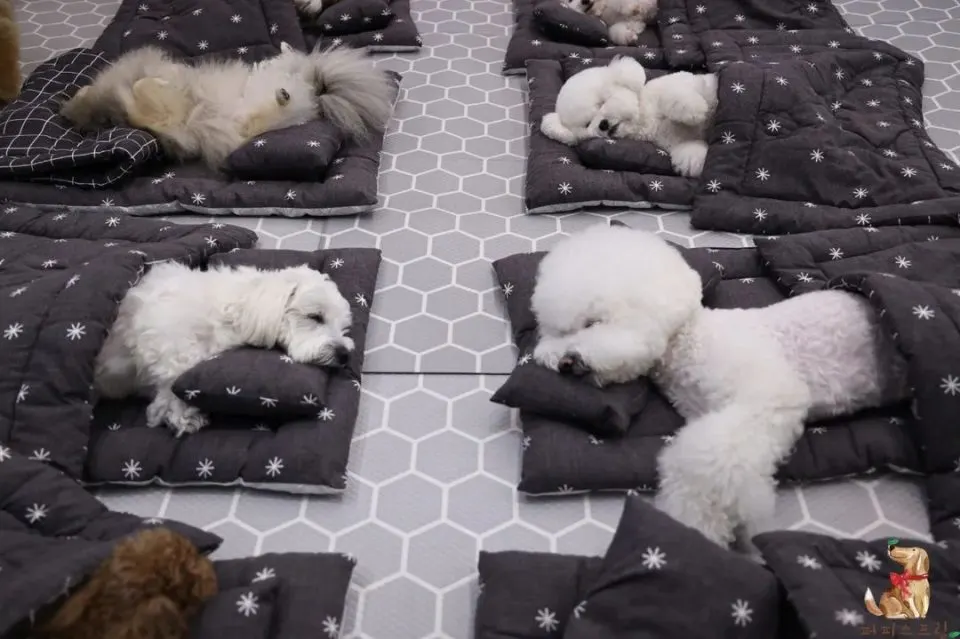
While these adorable pooches take their daily nap, the daycare staff gets a chance to rest as well. However, they simply couldn’t resist snapping some photos of these sweet puppies.
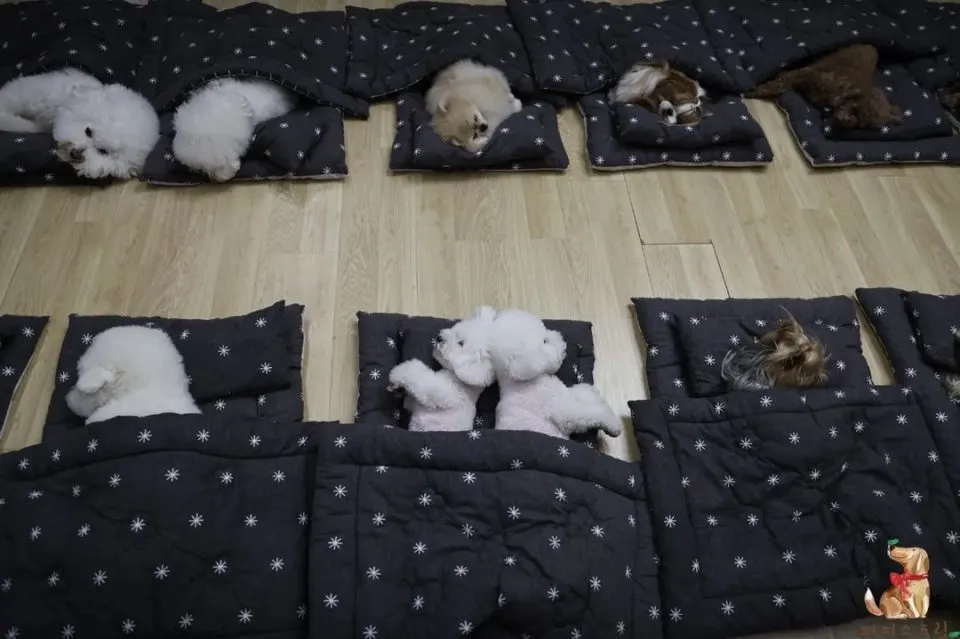
They started sharing those adorable photos of pups during nap time on their Instagram page and people loved it. They currently have more than 37K followers, and they regularly keep blessing the world with the cutest pictures ever.
The puppies take part in all kinds of outdoor and indoor activities according to a timetable, which also includes training them to be more obedient and sociable.
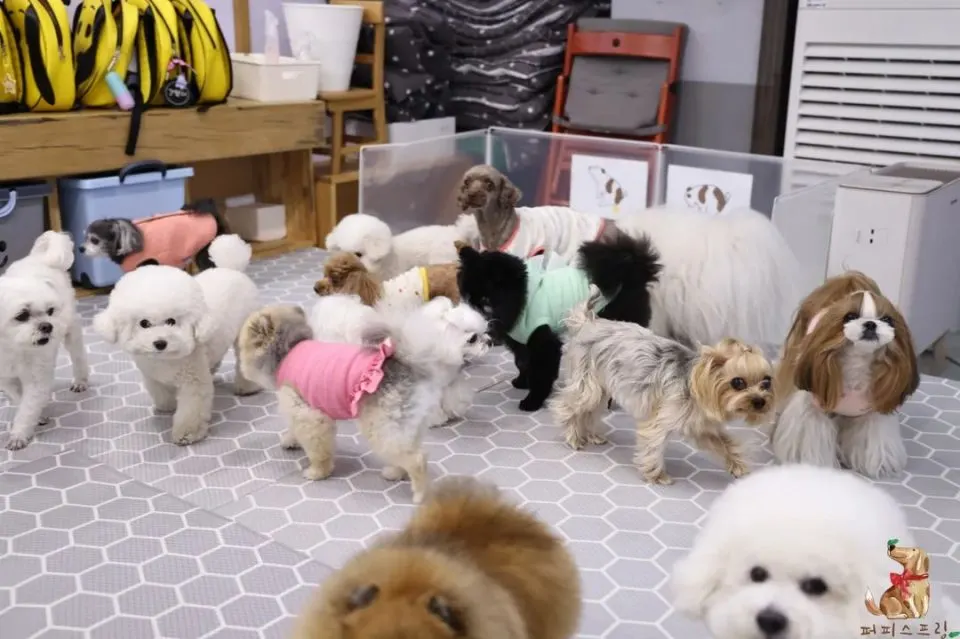
Those activities must tire out the adorable tiny tots, which is why they happily take their daily naps.
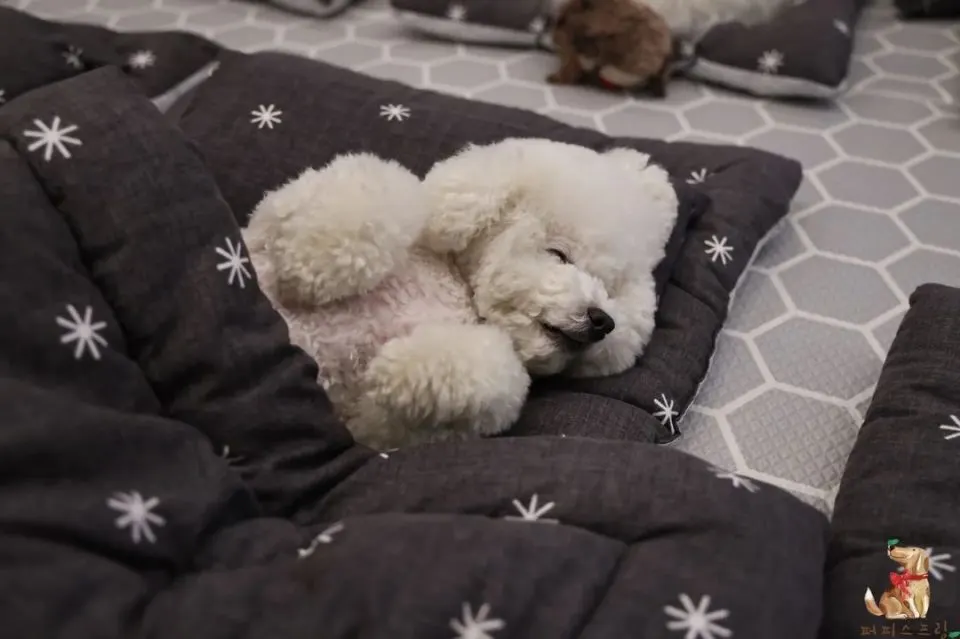

Each puppy has his own tiny sleeping bag where he gets tucked in and peacefully rests his head on a pillow.
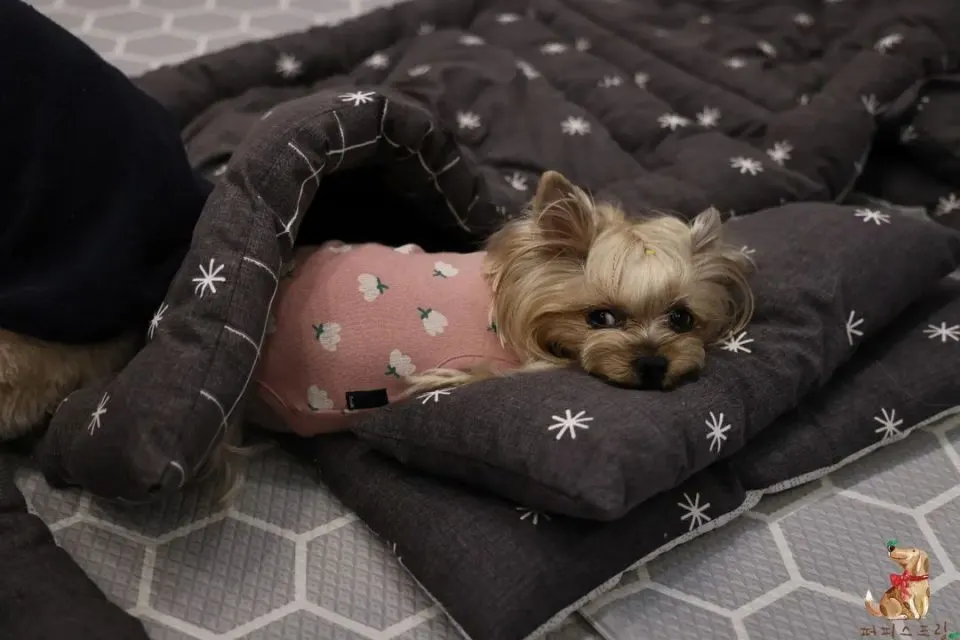

However, some pups prefer to sleep together in the same bed, which is probably the most adorable thing I have ever seen.


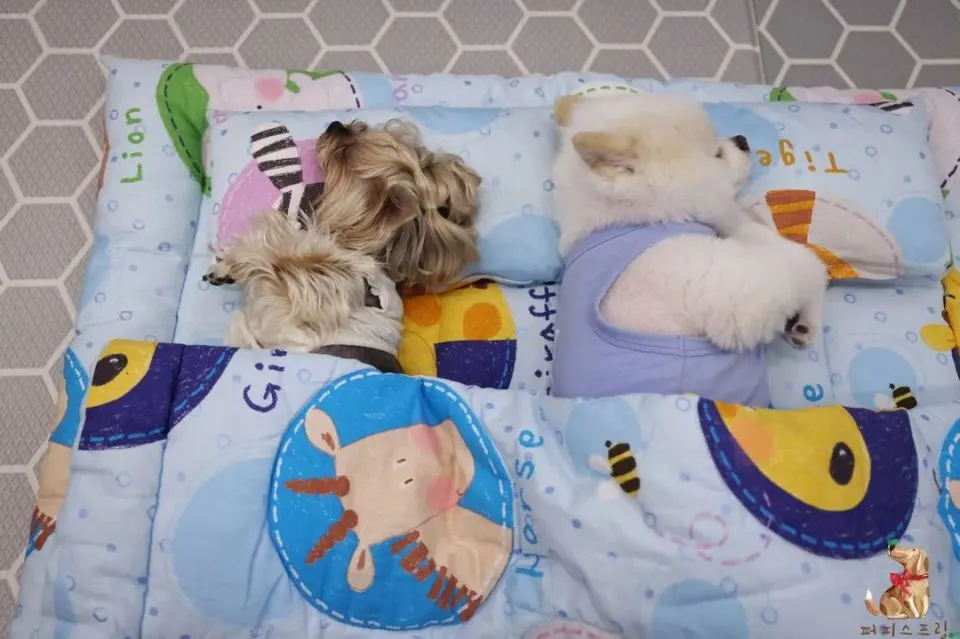
The daycare staff often plays some relaxing music in the background to help the pups sleep better.
People all over the world are fascinated with the fact that they manage to get all of them to lay down and sleep at the same time.
However, the spokesperson explains that “the reason the puppies can settle down for a nap in their sleeping bags is because it is part of their routine, so it is now a regular habit for them.”
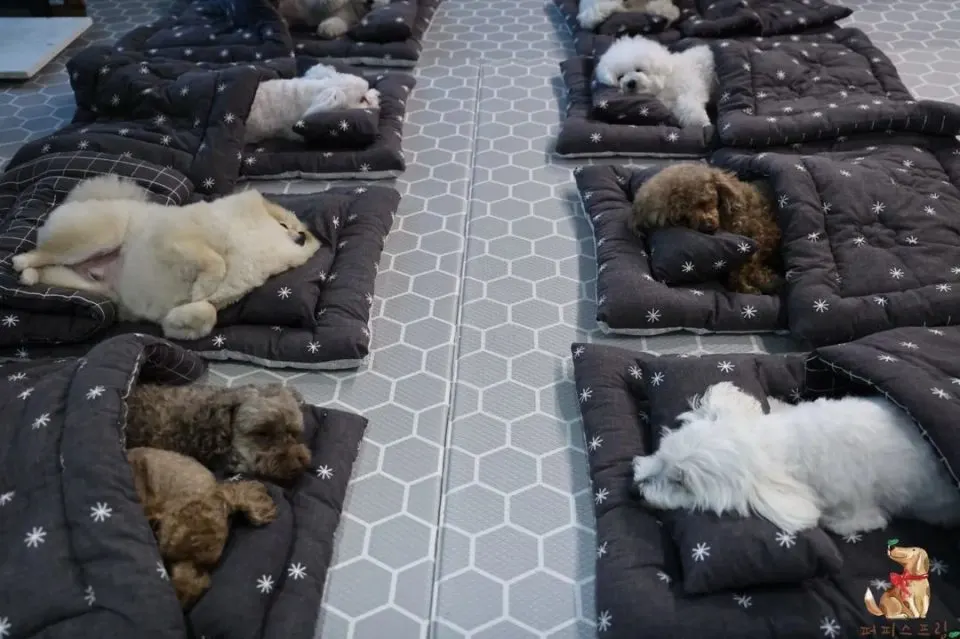
If you’ve had a bad day, I’m pawsitively sure that the sight of these precious pups will cheer you up immediately.
If your furry friend suddenly loses interest in their food, it can be concerning. You’re used to your pup’s hearty appetite, so when they start turning up their nose at mealtime, it’s natural to worry. As a seasoned dog trainer, I’ve seen this behavior before, and I’m here to shed some light on why your dog may be refusing to eat.
When your canine companion skips meals, it can be a puzzling situation. There are various reasons why your dog might be off their food, ranging from minor issues like a change in routine to more serious health concerns. Understanding the potential causes behind your dog’s decreased appetite is the first step in addressing the issue and ensuring your pup is happy and healthy.
Understanding the Reasons Behind Loss of Appetite in Dogs
Health-Related Causes of Anorexia in Canines
When your furry friend stops eating, it might be due to health issues. Dental problems, infections, gastrointestinal disturbances, or pain could be the culprits. Canines can also lose their appetite if they’re feeling nauseous or have metabolic disorders. If your dog’s appetite doesn’t improve within a day or two, a vet visit is essential to rule out any health concerns.
Psychological Factors Affecting Your Dog’s Eating Habits
Apart from physical health, your dog’s mental well-being plays a vital role in their eating habits. Stress, anxiety, or even changes in their environment can lead to a loss of appetite. Dogs are sensitive animals, and disruptions in their routine or sudden loud noises can affect their desire to eat. Creating a calm and routine environment can help alleviate stress and encourage your dog to eat regularly.
Common Symptoms That Accompany Loss of Appetite in Dogs
Behavioral Changes to Watch For
When your dog is not eating as usual, you should pay attention to any noticeable behavioral changes. These could include lethargy, increased restlessness, irritability, or disinterest in activities they usually enjoy. Observing your dog’s behavior can give you valuable insights into their overall well-being and help in determining the root cause of their decreased appetite.
Physical Signs That Shouldn’t Be Ignored
In addition to behavioral cues, it’s crucial to watch out for certain physical signs that may accompany a loss of appetite in dogs. These signs could include weight loss, vomiting, diarrhea, bad breath, or changes in their coat quality. These physical manifestations could indicate underlying health issues that need to be addressed promptly to ensure your furry friend’s health and happiness.
The Role of Diet and Food Quality
Assessing Your Dog’s Diet for Potential Issues
Check the ingredients in your dog’s food. Look for high-quality proteins like chicken, beef, or fish. Avoid foods with excessive fillers like corn or wheat, as they may not provide the necessary nutrients for your dog.
Ensure the food is appropriate for your dog’s age and size. Puppies have different dietary requirements than senior dogs. Choose a food tailored to your dog’s specific needs to optimize their health and appetite.
Monitor the portion sizes you are feeding your dog. Overfeeding or underfeeding can lead to appetite issues. Follow the recommended feeding guidelines on the food packaging or consult your vet for advice on portion control.
Watch for any changes in your dog’s eating habits when switching foods. Sudden changes can result in digestive upset or a reluctance to eat. Gradually transition to new food over a week to help your dog adjust.
The Impact of Food Freshness and Variety
Ensure your dog’s food is fresh and stored correctly. Stale or spoiled food can deter your dog from eating. Seal the food bag properly, store it in a cool, dry place, and check for expiration dates to maintain freshness.
Introduce variety into your dog’s diet to keep mealtime interesting. Rotating between different flavors or textures can prevent food boredom and encourage your dog to eat. Consult your vet before making any significant changes to ensure your dog’s nutritional needs are met.
Offer occasional treats like fruits or vegetables in moderation for added nutrients and to stimulate your dog’s appetite. Avoid giving too many treats, as they can lead to weight gain and unbalance your dog’s diet.
By assessing your dog’s diet for potential issues and ensuring food freshness and variety, you can promote a healthy appetite and overall well-being for your furry friend.
When to Consult a Veterinarian
What to Expect During the Veterinary Visit
When your dog is consistently not eating, it’s crucial to consult a veterinarian promptly. During the visit, the vet will conduct a thorough examination to assess your dog’s overall health. They may ask questions about your pet’s behavior, medical history, and any recent changes you’ve noticed. Be prepared to provide details about your dog’s appetite, energy levels, and any other symptoms you’ve observed.
Possible Diagnoses and Treatments
Based on the examination and information gathered, the veterinarian may diagnose potential health issues causing your dog’s lack of appetite. Common diagnoses could include dental problems, gastrointestinal issues, infections, or underlying diseases. Treatment options will vary depending on the diagnosis but may involve medication, dietary changes, or other interventions to address the specific underlying cause. It’s essential to follow the veterinarian’s recommendations closely to ensure your dog receives the appropriate care and support for a prompt recovery.
At-Home Remedies and Care for a Dog Not Eating
Tips for Encouraging Your Dog to Eat
If your furry friend is not eating, there are a few tricks you can try to stimulate their appetite.
- Warm Up the Food: Sometimes warming your dog’s food slightly can make it more appealing and release enticing aromas.
- Try Different Foods: Experiment with different types of food, textures, or flavors to see what your dog prefers.
- Hand-Feed Your Dog: Offering food by hand can sometimes encourage a picky eater to start eating.
- Stick to a Routine: Dogs thrive on routine, so try to feed your dog at the same times each day.
- Limit Treats: If your dog is not eating their main meals, avoid giving too many treats between meals.
When Home Care Isn’t Enough
When your dog’s appetite doesn’t improve with at-home remedies, it’s time to consult a veterinarian.
- Professional Evaluation: A vet can conduct a thorough examination to identify any underlying health issues.
- Diagnostic Tests: Your vet may recommend tests like blood work or imaging to pinpoint the problem.
- Treatment Plan: Depending on the diagnosis, treatment may involve medications, dietary changes, or other interventions.
- Follow-Up Care: Follow your vet’s instructions carefully and schedule any follow-up appointments to monitor your dog’s progress.
Conclusion
So, there you have it – when your furry friend isn’t chowing down like usual, it’s essential to pay attention and take action. From health issues to picky eating habits, there could be various reasons behind your dog’s decreased appetite. Remember, keeping an eye out for any changes in behavior or physical symptoms is key. Don’t hesitate to reach out to your vet for guidance and support. By trying out different strategies and being proactive, you can help your dog get back on track to enjoying their meals. Your pup’s well-being is a top priority, so stay observant, stay informed, and most importantly, stay pawsitive!
Frequently Asked Questions
Why has my dog lost its appetite?
Loss of appetite in dogs can be due to various reasons, including health issues, dental problems, stress, dietary changes, or environmental factors.
What should I do if my dog is not eating?
Monitor your dog for other symptoms, consult a veterinarian promptly, provide details about the situation, and follow their advice for diagnosis and treatment.
What are the signs that my dog is not eating well?
Signs that your dog is not eating well include lethargy, irritability, weight loss, changes in coat quality, and refusal to eat food normally enjoyed.
How can I encourage my dog to eat?
Encourage your dog to eat by warming up the food, trying different foods, hand-feeding, maintaining a feeding routine, and limiting treats.
When should I take my dog to the vet for not eating?
If at-home remedies are not effective or if your dog’s appetite loss persists, consult a veterinarian for a professional evaluation and appropriate care.
[no_toc]

Hey there, I’m Janet Brooks, a dog-loving student from California. I’m all about helping pups in need, especially those without homes. Me and my awesome friends work together to give shelter and love to stray dogs. Oh, and I also write blogs about dogs to share helpful info.